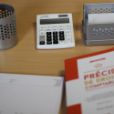LEASING IN LUXEMBOURG: DEFINITIONS AND PROCEDURES
According to the principle of balance sheet assets, only assets owned by the company may theoretically be entered on the assets side of the balance sheet. This long-established definition implies that legal ownership coincides with economic ownership.
The "leasing" contract, a recent concept which became widespread in the 1960s (its invention dates back to an American "Lend-Lease" Act of 11/03/1941) is based on a differentiation between the legal and economic ownership of an asset.
It has subsequently experienced great success due to its ease and flexibility of use and the additional legal security it brings to the lessor. The fact that these contracts may lead to a separation of legal ownership and the transfer of risks associated with ownership has raised new questions for the accounting and tax treatment of these transactions, which each country has resolved in a different way.
In Luxembourg, there is an additional difficulty because its tax law is inspired by German law, which means the existence of a notion of valuation of the property at the end of the rental period (residual value and purchase option).
In Luxembourg, all of these various types of contract are grouped together under the generic term "leasing". A distinction is made between financial leasing, operating leasing and real estate leasing.
Definitions of leasing in Luxembourg
- A finance lease is a leasing contract which provides for an irrevocable leasing period at the end of which the lessee will have paid the full cost price of the leased asset, incidental expenses and financing charges. This contract may or may not include a purchase option or a sale option at the end of the rental period.
- An operating lease is a leasing contract which includes several services in addition to the leasing of the asset, such as maintenance, insurance, expertise, etc. In principle, this contract does not provide for a purchase option at the end of the rental period.
- Real estate leasing is mainly characterised by the fact that it relates to a building. It is most often a method of financing a property where the principal is a financial institution which does not want to assume any of the risks associated with the property.
The accounting treatment of leasing
The Accounting Act does not mention any mandatory treatment for leasing contracts.
In accordance with the principle of ownership, only those assets which are legally owned by the company are entered in the company's balance sheet.
If an economic approach is adopted and the contract sets out a transfer of financial risks and economic benefit to the lessee, it seems justified to record the leased asset on the asset side of the lessee's balance sheet, thus reflecting the economic potential of the business.
In order to determine who is the owner from an economic (and therefore accounting) viewpoint, it is necessary to consider the economic nature of the situation and in particular to examine what happens at the end of the lease: is the financial residual value higher or lower than the estimated market value of the leased asset? However, it is clear that in most cases the market value is not objectively measurable 3 or 5 years in advance. In these cases (which represent the majority of situations), the objective reference criterion is the purchase price of the financed asset, which is known in all cases. To determine who the economic owner is, it suffices to compare the current value of the rents and the possible purchase option with the purchase price of the asset. If this value is higher than 90% of the purchase price, the asset "economically belongs" to the lessee.
In practice, for real estate and financial leasing, it is recommended to use the economic approach and to record the leased asset on the asset side of the balance sheet (the chart of accounts provides account 22.2 for this purpose).
On the other hand, the operating lease contract is treated as a simple lease.
Tax treatment of leasing
Inspired by German law, tax law has taken a somewhat different approach to the accounting principles set out above. For the tax authorities, there are 4 types of leasing contracts:
- with no purchase option;
- with a purchase option (option at the initiative of the lessee);
- with an option to extend it automatically or not;
- special.
The main criterion to be taken into consideration for these four types to determine the fiscal owner is the duration of the lease contract.
In a somewhat arbitrary manner, three criteria have been adopted to make this distinction:
- the lease period is less than 40% of the usual period of use;
- the lease period is between 40% and 90% of the usual period of use;
- the lease period is more than 90% of the usual period of use.
In case no. 1, the owner is always the lessee, although this does not correspond either with the legal definition or with the economic reality. In practice, this is rarely the case.
In case 2, the owner is always the lessor, except in cases where the lessee has a purchase option below the market price (which means that they have already paid for the asset) or in the case of an extension of an existing contract. The new lease is less than the depreciation of the residual book value or the estimated realisable value (the approach is economic).
In case 3, the lessee is always the owner (here too the approach is economic).
VAT
Regardless of the accounting and tax treatment required or adopted to record leasing contracts, for VAT purposes these contracts are considered as leases followed or not by a sale. Rental invoices will therefore be subject to VAT in accordance with the rules for the provision of services and the delivery of the goods will only take place on the date of exercise of the option.
The difference on the result generated by a legal or economic treatment of the same "leasing" operation (illustrated by an example)
Case of straight-line depreciation
|
|
Assumptions |
Financial year 1 |
Financial year 2 |
Financial year 3 |
Financial year 4 |
|---|---|---|---|---|---|
|
Economic accounting |
|
|
|
|
|
|
Fixed assets |
100,000 |
|
|
|
|
|
Straight-line depreciation |
4 years |
25,000 |
25,000 |
25,000 |
25,000 |
|
Interest |
|
3,567.57 |
2,599.63 |
1,592.24 |
543.82 |
|
Residual value |
1,000 |
|
|
|
1,000 |
|
Total expenses for the financial year |
|
28,567.57 |
27,599.63 |
26,325.24 |
26,543.82 |
|
|
|
|
|
|
|
|
Legal accounting |
|
|
|
|
|
|
Rents |
|
27,325.81 |
27,325.81 |
27,325.81 |
27,325.81 |
|
|
|
|
|
|
|
|
Difference in results |
|
1,241.76 |
273.81 |
-733.57 |
-782.0 |
Case of declining balance depreciation
|
|
Assumptions |
Financial year 1 |
Financial year 2 |
Financial year 3 |
Financial year 4 |
|
Economic accounting |
|
|
|
|
|
|
Fixed assets |
100,000 |
|
|
|
|
|
Declining balance depreciation |
4 years |
31,250 |
22,916.67 |
22,916.67 |
22,916.67 |
|
Interest |
|
3,567.57 |
2,599.63 |
1,592.24 |
543.82 |
|
Residual value |
1,000 |
|
|
|
1,000 |
|
Total expenses for the financial year |
|
34,817.57 |
25,516.30 |
24,508.91 |
24,460.48 |
|
|
|
|
|
|
|
|
Legal accounting |
|
|
|
|
|
|
Rents |
|
27,325.81 |
27,325.81 |
27,325.81 |
27,325.81 |
|
|
|
|
|
|
|
|
Difference in results |
|
7,491.76 |
-1,809.52 |
-2,816.90 |
-782.0 |
The above example shows that differences in results can be created over time depending on the method chosen (even if the cumulative result will be the same in both cases). These differences, which are of little significance to traditional companies, can be significant for rental companies and can be used to gain flexibility for the taxes due.
It is thus in the interest of the parties involved to agree on a common position, thereby avoiding accounting difficulties and disputes.


.jpg/jcr:content/La%20cat%C3%A9gorisation%20des%20entreprises%20(BELVAL).jpg)




